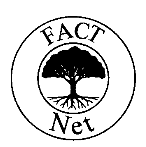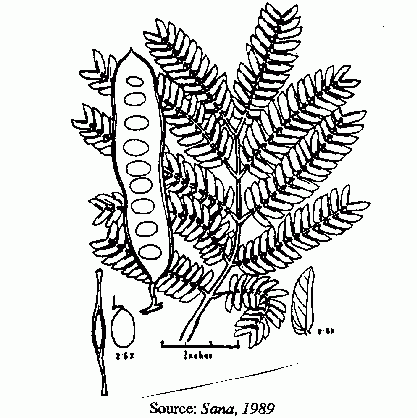Albizia odoratissima – Tea Shade Tree

NFTA 95-01, January 1995
A quick guide to useful nitrogen fixing trees from around the world
Albizia odoratissima, Benth. (Syn. Mimosa odoratissima, Roxb.) is a medium sized tree highly valued for shade and soil improvement in tea plantations of the Asian subcontinent. It is particularly popular in North-east India and Bangladesh. About 75% of total tea shade trees in Bangladesh are of this species (Sana 1989). On the subcontinent it is known as karuvagai, karmaru, bansa, bilkumbi (Troup 1921), chamkoroi (Hasan 1963), tetua-koroi (Kamaluddin 1984), and kalasiris (Sana 1989).

Botany
Albizia odoratissima (Leguminosae, Subfamily Mimosoideae) is a multipurpose woody legume which obtains a height of 22-26 m and diameter of 120-150 cm. On good sites five-year-old trees can be 5 m in height and 14 cm in diameter. A mean annual diameter increment of 1.3 cm has been recorded for this species (Troup 1921). The bark is dark grey to light brown in color with horizontal lenticels. The crown is relatively dense. The dark green leaves are bipinnately compound, downy, with 6-9 pinnae and 16-20 pointed asymmetrical leaflets.
Flowers are corymbs, pale yellowish white, fragrant, and generally appear from March to June. Fruits appear in early August and start ripening at the end of October. The thin flat pods are 13-20 cm long and brown when ripe (Hasan 1963, Sana 1989). Trees produce large amounts of pods, each containing 8-12 seeds. Albizia odoratissima is deciduous, with a short leafless period from December to February. New leaves normally appear before the old ones have completely fallen. Branching habit is uniform, but irregularities occur when the tree is damaged.
Ecology
Albizia odoratissima tolerates a wide range of temperatures and rainfall. In its natural range the maximum shade temperature varies from 37°-50°C and the minimum from 0°-15°C. Normal rainfall varies from 650-3000 mm with a dry season from November to March. It occurs from sea level to 1500 meters (Troup 1921) and grows sporadically in both dry and moist deciduous forest zones.
Growth of A. odoratissima is best in deep, well drained sandy soils (Sana 1989). The species prefers soils with large amounts of organic matter. It tolerates hot humid conditions, but does not tolerate water-logging. On poor soils growth is stunted. Young plants are susceptible to frost. Albizia odoratissima is classified as moderately light demanding.
Juvenile trees require shade. Trees coppice well, shoots reaching a height of 3 meters in two years. It is susceptible to fire, but resistant to weed competition and drought. It regenerates naturally in sheltered areas with good soil.
Distribution
Albizia odoratissima occurs naturally in Southern China, Burma, Peninsula India, and Tropical Africa. Under tropical conditions the species is not gregarious. It is frequently found on hill slopes and sometimes in valleys.
Uses
Shade. Albizia odoratissima has been extensively planted as a shade tree in tea and coffee plantations. The shade extends the productive life of crop plants and increases annual yields. Recommended spacing varies from 6 x 6 to 12 x 12 m. Albizia odoratissima benefits tea and coffee production in many ways. Its well developed root system decreases erosion and utilizes the subsoil moisture and nutrients not available to tea and coffee plants. Through leaf litter, A. odoratissima provides organic matter and soil nutrients to the rhizophere of understory plants. Tree canopies decrease soil desiccation, suppress weed growth and protect plants from hail and rain storms. Albizia odoratissima’s presence in the tea monoculture reduces incidence of tea pests, particularly red spider mites and scarlet mites. The shade also provides plantation laborers a comfortable working environment under otherwise hot tropical conditions.
Wood uses. Albizia odoratissima produces valuable fuelwood. Dead and defective branches from shade trees are a major source of fuel for plantation laborers. The heartwood of mature trees is a beautiful dark brown color. The premium quality wood is suitable panelling and furniture. It is also used for carts, wheels, farm implements and construction timbers. Wood weight at 12% moisture content is 735 kg/cubic meter. The wood is 20-40% stronger than teak (Anon. undated).
Other uses. The pods of Albizia odoratissima are eaten by monkeys. The leaves are an excellent green manure and cattle fodder. Sana (1989) reports Albizia odoratissima contributed 16 kgs of nitrogen per hectare from 655 kgs of dry weight leaf liter.
Silviculture
Seed collection and handling
. Pods should be collected while on the tree immediately after they turn brown. Half-opened pods are also collected from beneath trees. Following collection, pods are dried in the sun for 5-7 days. Pods are then lightly pounded with a hammer to extract seeds. Extracted seeds are dried again in the sun for 3-4 days and then stored in bags under well ventilated, dry conditions. If seeds are to be stored for a long period, they should be treated with a 5% DDT or Heptachlor dust at the rate of 100 grams per kg of seeds (Anon. 1988). There are approximately 21,000 seeds per kg. To break dormancy seed can be soaked; a) in cool water for one hour, b) in 80°C water for two minutes, or c) in boiling water for 30 seconds. Removed from the water, moist seed is stored overnight and sown the following morning. Seedlings emerge within a week. Fresh seed may have a germination rate of 99%. Germination of year-old seed decreases to 55-65%.
Propagation. Nursery production should be initiated in November or December, 4-5 months before the planting season. Well drained sandy loam soil from beneath A. odoratissima trees is recommended for nursery use. If available, well decomposed compost should be mixed with the soil at a ratio of 1:3. Additionally, 500 grams each of triple super phosphate (TSP) and lime should be added to every cubic meter of nursery soil. The use of large nursery bags is recommended to encourage growth of a deep taproot. In each nursery bag 2-3 seeds should be sown at a depth 5-20 mm and covered with a thin layer of sand. Every two weeks seedlings should be fertilized with a well decomposed liquid compost or a standard phosphorus and potassium fertilizer. In large nurseries, 4-10 cm seedlings are sprayed every two weeks for protection from insects and fungal diseases. Recommended spray contains 300 ml of malathion and 300 grams of copper oxychloride in 200 liters of water (Anon. 1988).
Albizia odoratissima is also established by direct seeding or stump cuttings. For quick establishment, stump cuttings give the best results. Stumps are prepared in the late dormant season immediately before buds swell. Trees with stem diameters of 5-7 cm are appropriate for stumps. Selected trees are cut at a height of 1.5-2 meters and all the lateral branches are removed. It is best to select trees with few lateral branches below the 1.5-2 meter cutting height. Trees should have well developed roots. Carefully, expose the root system to a depth of 90 cm. Sever the taproot at 80-90 cm and prune all lateral roots. Stumps should be planted immediately in pits 90 cm deep and 75 cm wide.
Planting and fertilization. At the beginning of the spring rains seedlings are ready for field planting. Seedlings are planted in pits 90 cm deep and 45 cm wide. They should be fertilized during planting. Recommended fertilization rates per seedling are 10 kgs of rotted cattle manure, 200 g TSP, 2.5 kg wood ash and 1 kg slaked lime. Components should be well mixed with the soil from the planting pit and replaced.
Fertilization of young shade trees improves tree growth and plantation production. For trees under 2.5 m height broadcast 300 grams TSP in a 1.5 meter diameter-circle around the tree. For trees up to 4 m height 333 grams TSP is applied to a 3 meter diameter-circle. Fertilization should be repeated three times per year; April, June and August (Anon. 1988).
Symbiosis
Through a symbiotic relationship with Rhizobium bacteria, Albizia odoratissima fixes atmospheric nitrogen. Under natural conditions seedlings generally bear abundant root nodules. For nursery production it is wise to use soil from under a stand of A. odoratissima. No quantitative data is available on the Rhizobium specificity of this species.
Limitations
Albizia odoratissima is prone to attack by caterpillars, root bores, and root diseases, particularly as a young tree (Barua 1989). Dieback, branch canker, and red rust are also problems for young trees. Damping-off, a fungus infection, is common in poorly managed nurseries. In India, heart-rot of this species is caused by Ganoderma applanatum (Lenné 1992). Albizia odoratissima sometimes produces uneven shade (Barua 1989) which causes management problems under plantation conditions.
Tree Improvement
Tree improvement programs for superior canopy characteristics and resistance to insects and disease should be initiated. In Bangladesh improved planting stock is obtained from root suckers of select varieties. Root cuttings of 1-2 cm diameter and 15-20 cm length are placed under heavy shade in a moist rooting bed. One-third of the root is exposed and two-thirds buried in the soil. Spacing between cuttings is approximate 20-30 cm. Within a few weeks the stock is ready for transplanting (Anon. 1988).
References
Anon., 1988. Guide line on management of shade trees. GL No. 5. The Consolidated Tea and Lands Company (BD) Ltd. The Baraoora (Sylhet)
Tea Company Ltd. (Incorporated in Great Britain) 1-4.
Anon., undated. Indian forest utilization. vol. II 925 pp.
Barua, D.N. 1989. Science and practice in tea culture. Tea Research Association, India 402-436.
Hasan, K.A. 1963. Shade trees for tea – their functions and behavior. Tea Journal of Pakistan 1(2):14 pp.
Kamaluddin, M, 1984. 1984. Forest Ecology, Institute of Forestry, University of Chittagong. Chittagong, Bangladesh. 164 pp.
Lenné, J.M. 1992. Disease of multipurpose woody legumes in the tropics, a review. Nitrogen Fixing Tree Research Reports 10:13-29.
Sana, D.L. 1989. Tea Science. BTRI, Moulvibazar, Bangladesh, 45-51.
Troup, R.S. 1921. Silviculture of Indian Trees. II:466-484.
Written by Md. Abdullah Abraham Hossain, Riaz Kazi Lane, Sutrapur, Bogra, Bangladesh. This highlight was published with support from the USDA Forest Service Tropical Forestry Program USDA/FS/TFP.
